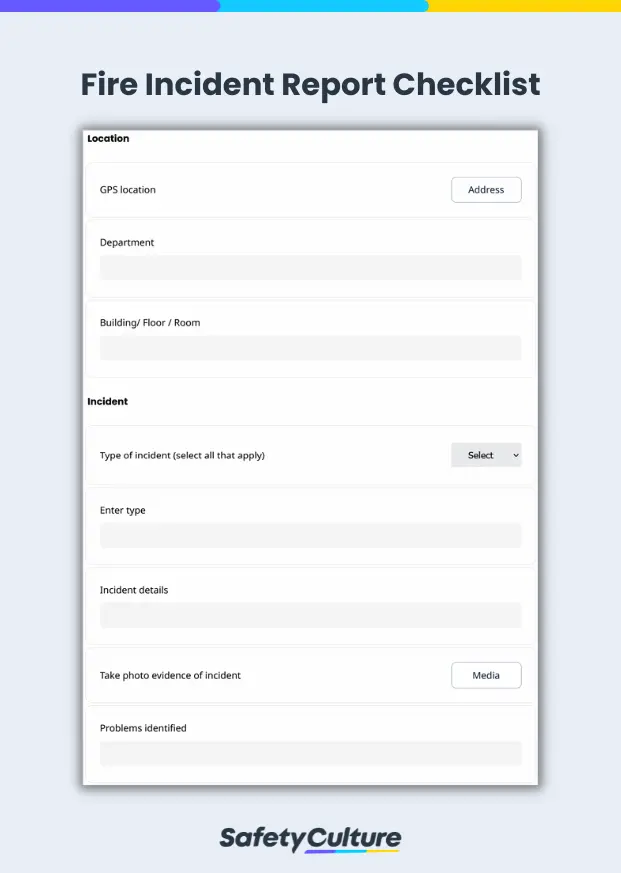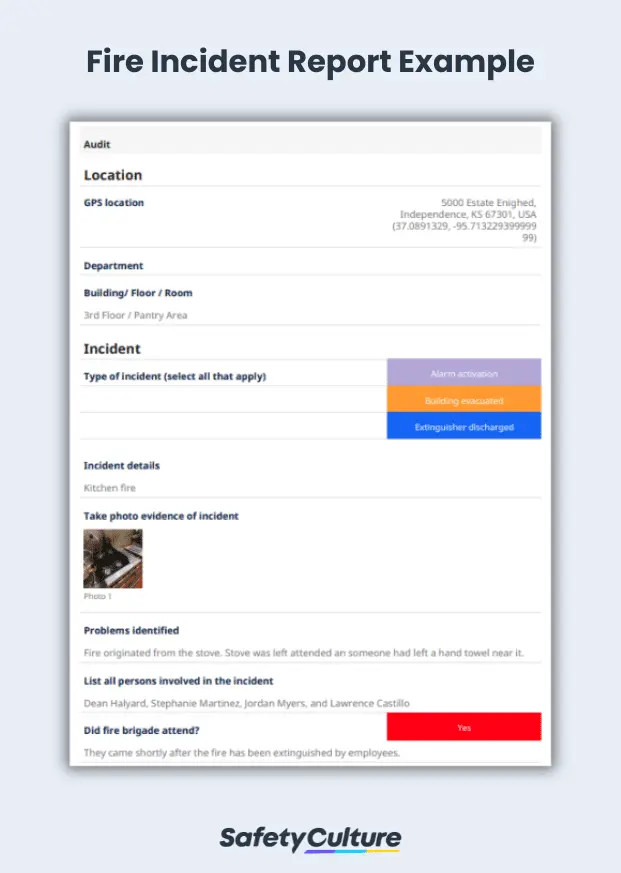What is a Fire Incident Report?
A fire incident report is a document used by fire department personnel or fire safety officers to provide a narrative around the cause of a fire incident, damage or injuries caused, and lives lost, if any. Fire incident reports are also required by law as a means to obtain crucial fire safety information and help improve fire prevention initiatives.
Why is it Important?
Fire incident reports are not just mere documentation of fire-related incidents; they help fire service units build on their baseline of fire safety data, make analyses of circumstances and trends, and improve fire safety strategies to help reduce loss of life and property caused by fire incidents.
Further, fire incident reports provide value by:
- allowing fire service units to quantify what they do and leave a data footprint of their activities;
- helping identify trends, predict future problems, and strategically plan the deployment of limited resources;
- helping serve as point of reference in measuring fire safety program performance;
- serving as legal documents during insurance investigations to help determine the appropriate amount to be paid to an affected owner; and
- providing references to investigators during criminal inquiries.
How Does the Report Differ from a Fire Investigation Report?
While the fire incident requires basic information about the fire incident location, the potential cause, properties damaged, people injured and/or lives lost, the fire investigation report dives deeper into details surrounding the fire incident.
The fire investigation report is used, in collaboration with an investigative team, to help determine whether the event is accidental or criminal and document extensive analysis of contributing factors and statements made by witnesses.
How to Make it an Effective Report?
To write a good report on a fire incident, the fire safety personnel should ensure that the fire incident report:
- answers the basic questions about the incident to paint a clear picture–who, what, where, when, why, and how;
- presents only factual, accurate, objective and complete information;
- uses correct grammar, punctuation, and spelling;
- is written concisely and gets straight to the point; and
- written in standard English (or your country’s official business language).
Further, firefighting personnel can adopt the F.I.R.E.S. method of fire incident and investigation report writing to help effectively meet these characteristics of a good report.
F = First observation/Findings
What information was given at dispatch? What was the weather like? What was the brief on the initial report? Which commands were given? These types of questions help form the report and help remind you of important details down the road.
I = Investigation/Initial actions
What directions were given to responding units? Was forced entry needed to address the emergency? How was care delivered to occupants who were injured? Recording accurate details of these actions in your incident report will prove to be important in defending a fire emergency response when being questioned years later.
R = Response to Actions:
Did you make a rescue or lead occupants to safety? Was suppression of the fire achieved with the handline selected? What happened to the smoke once ventilation was established? These are sample questions that the fire incident report should answer in summary. If questions arise at a later time, the details of the responses may be the only requisite to get accurate information about the incident.
E = Evaluation
An evaluation of the incident scene and the end result is the next step. Did you encounter a hydrant that failed to function (severe weather or damage)? Were there parking or access issues, crowd control, hydrants across six lanes of busy traffic? Taking note of the external factors that affected the fire incident response not only describes the incident but also produces a historical reference for fire safety issues encountered that require code or legislative changes.
S = Special Statements
Last but certainly not least is the section on special statements. What was done prior to leaving? To whom was the scene turned over to? Was it the police, the homeowner, or the fire investigation unit? This is also a good avenue to list any issues that played a role in the fire incident.
Fire Incident Report Example
This example of a fire incident report can be viewed as a PDF and web report. It includes details such as the incident location, problems identified, evidence found, people involved, and other important information. This uses a pre-existing template that can be modified according to the investigation team’s needs.
FAQs About Fire Incident Report
Documents such as fire incident reports provide investigation teams and the people or property owners involved in the incident with a comprehensive and data-backed reference. This is also used as documentation that can be cited and reviewed in the future as needed.
In the United States, fire incident reports are required to be submitted to the National Fire Incident Reporting System (NFIRS), the largest database of fire incidents in the world. Managed by the U.S. Fire Administration (USFA), NFIRS allows 23,000 fire departments in the US to use a uniformed way of fire incident reporting.
To write a comprehensive and reliable fire incident report, you should make sure to include the following information:
- Date and time the incident report was created
- Who prepared the report
- The exact location of the fire incident, use GPS is available
- Type of incident reported (alarm activation, building evaluation, etc.)
- Photo as evidence of the incident
- Cause of the fire incident
- Listed named of all the people involved




